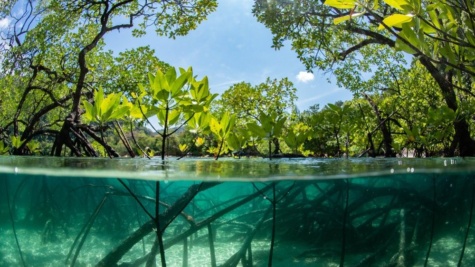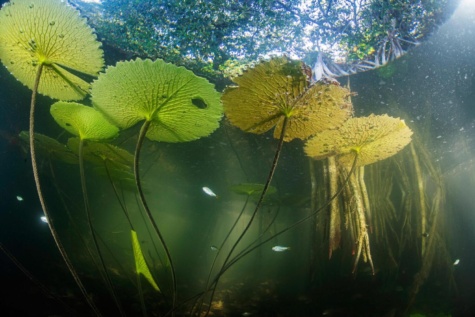
Sosie Casteel | Head Editor
October 8, 2021
Near the Mexico-Guatemala border, a research team discovered a mysterious mangrove forest with a gripping backstory. The find brings new insight into biological history in the region.
Mangroves are groups of trees that tend to live in the rocky inter-tidal zone found along coasts. They are extremely productive biomes, often containing diverse life and protecting shorelines from storm surges. Mangroves usually grow in salty or brackish waters rather than freshwater ecosystems, which is where the research team found them in.
Further analysis revealed that the mangrove forests arrived there over 100,000 years ago when the Earth’s surface was much warmer than it is today. Researchers believe that the mangroves may have been able to survive outside of their typical habitat because of high levels of calcium leached out by surrounding land.
The mangrove forest is surrounded by various other plants and animals that also usually live in coastal environments.
Upon analyzing the genomes of these mysterious mangroves, scientists concluded that the forest formed during the Earth’s last warming and then remained landlocked as sea levels receded.

“It probably meant that in a past civilization or past world that the sea levels rose high enough to have biomes like mangroves in unusual places,” senior Cameron Trunec said. “It’s super cool how they reveal things from long ago.”
Ecologists from the Scripps Institute of Oceanography referred to the process as “putting together a lost world.” Sea levels have risen and fallen many times throughout our planet’s history, likely due to subtle changes in its orbit. Currently, sea levels are rising about an eighth of an inch per year. Environmentalists have made predictions about future sea levels, but the mangrove forests indicate sea levels higher than any predictions made thus far.
Previous models have underestimated how much of the Yucatan region will be submerged when sea levels rise. The mangrove forest may help local analysts determine how climate change will impact the region. More accurate data will help the peninsula better respond to the issue in the following decades. “I think the mangroves might be a slight foreshadowing for what will happen in the future,” senior Grace Parry said. “Warming and sea-level rise are coming, even if it not to the same extent.”
This latest development demonstrates the continued importance of biological study as a resource for telling Earth’s history. As the world grapples with rising sea levels, the life threatened by climate change will be essential to fighting it.

Leave a Reply